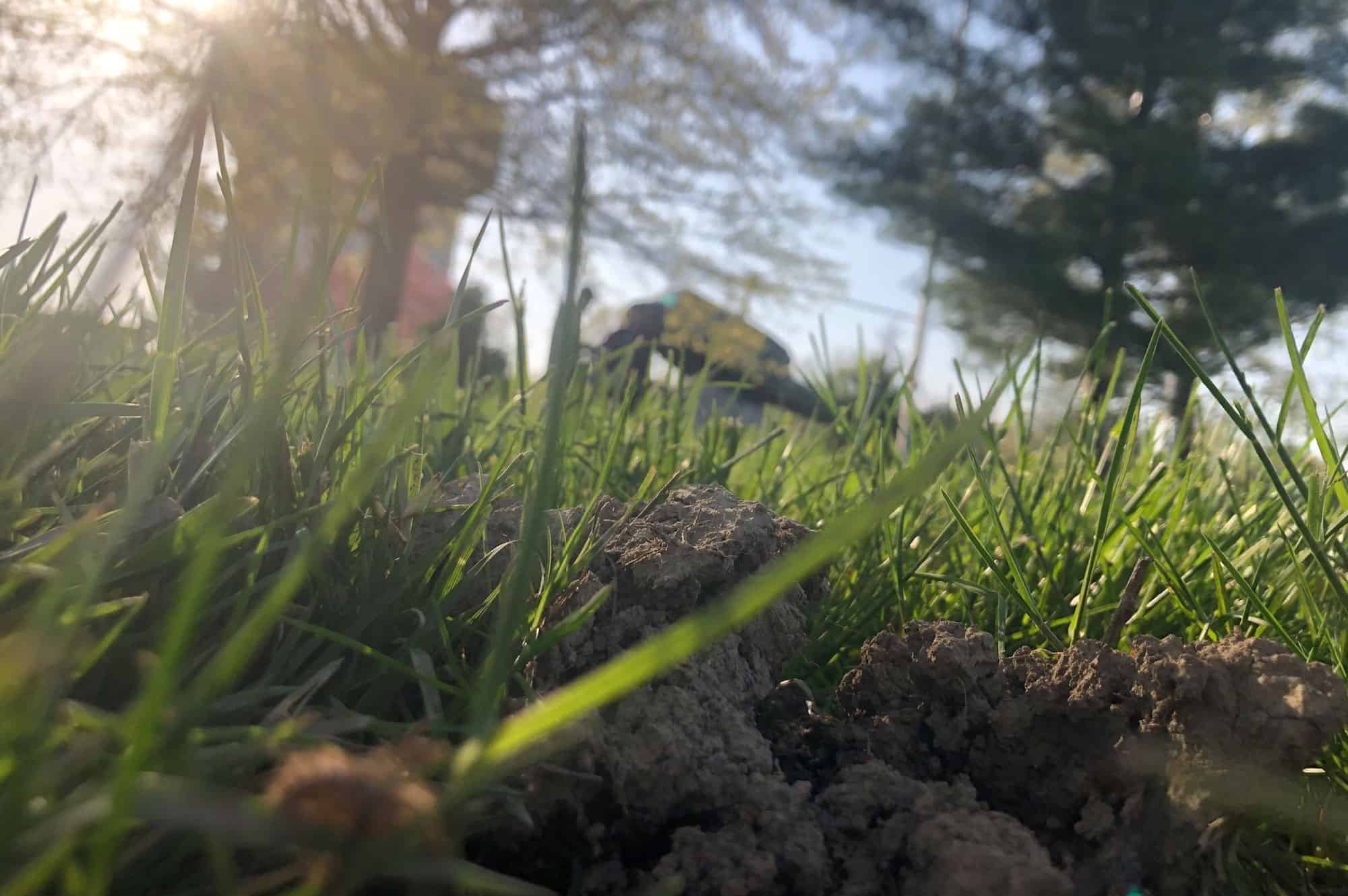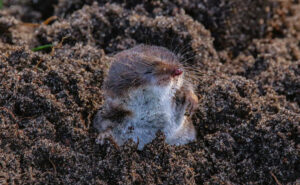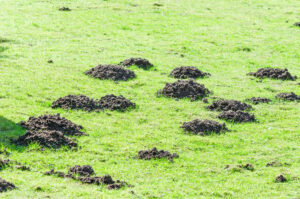
The eastern ground mole lurks underground in Cincinnati and Northern Kentucky, looking for its new home. Once it finds a hospitable yard full of its favorite foods, it’s likely to stick around. In fact, once moles have made their home in your yard, they aren’t likely to leave on their own. Instead, you’ll need to have them removed before the mole damage problem gets worse.
Mole damage can be widespread and severe, including collapsed above-ground pools, broken driveways, and more. As the moles reproduce, their damage increases, costing you more money in repairs and making your yard an eyesore.
The best way to get rid of moles is to know the early signs of mole damage, so you can act fast. Read our handy guide below for the most common signs of mole damage, so you know what to look for.
Dead or Dying Patches of Grass
Did your lawn suddenly change from lush and green to dry, damaged, and patchy? If so, this could be a sign of mole damage.
Moles dig tunnels underneath your grass, disrupting the root systems and topsoil underneath your lawn. With the roots disrupted, the lawn on top of the surface dies, leading to uneven brown patches along the tunnel’s path.
Look carefully at your lawn if you notice dead patches. A small, concentrated area may not be a sign of moles. But if you have dead patches of grass in multiple areas or in what appears to be a direct tunnel path, you may be dealing with a mole infestation.
Visible Tunnels on the Surface
Along with dead patches of grass, you may notice raised tunnels as a sign of mole damage. Moles uproot plants and grass as they dig just below the surface. Your lawn may appear raised or bumpy along these paths.
You can also use visible tunnels to determine the severity of a potential mole damage problem. Moles tend to dig more tunnels rather than using the same ones. So, you’ll notice an increase in the raised tunnels and dead grass as the moles multiply and expand their territory. More tunnels mean more moles, so you’d want to act quickly to eliminate them before the problem gets any worse.
Molehills or Mounds of Dirt
Molehills and mounds of dirt may not be as common as other signs of mole damage, but you still need to be on the lookout for them. Molehills occur when moles force dirt upwards as they dig under the ground’s surface. As they push the dirt behind them to dig deeper, the dirt becomes raised in small piles.
You won’t notice huge mounds of dirt, however. Molehills are volcano-shaped piles about six inches tall. They’re also usually connected to the entrances of mole tunnel systems, which will be visible on the surface of your lawn.
An Increase in Weeds
Have you noticed more weeds sprouting in your lawn or garden? You may not connect this phenomenon to mole damage, but weeds can actually be an indication of moles in your yard.
As moles dig, they uproot grass and plants with their tunnels. This disruption of their root systems can allow weeds a chance to sprout. As more plants and grass are uprooted, more weeds may pop up in their place. If you don’t catch the mole problem in its early stages, your yard could quickly be overtaken by weeds and mole damage.
Visual Signs of Moles
Mole damage isn’t the only thing you need to look out for in your yard. If you suspect a mole problem, the largest sign will be when you spot the moles themselves. But what do you need to look for? How do you tell a mole apart from other yard pests?
The eastern ground mole is the most common mole species in Cincinnati and Northern Kentucky. They are small mammals with dark brown fur. They have potato-shaped bodies and are approximately seven inches long and weigh around four ounces. They have beady, black eyes that may be hard to spot due to how tiny they are. Moles also have pointed muzzles and wide, flipper-like feet used to dig tunnels.
Moles are most active during the spring and fall and during evenings or early mornings. You can also catch them more easily moving around after it rains or on a warm day. When the soil is moist and the ground is warmer, they’ll tend to make their way closer to the surface, instead of digging deeper underground.
If you spot moles in your yard, along with other visual signs of mole damage, you’re likely dealing with a mole infestation.
How Do I Prevent Mole Damage?
Getting rid of the moles once they move into your yard is the only surefire way to prevent future damage. However, there are some things you can do to prevent moles from finding your yard hospitable in the first place.
Moles like soft, damp soil. It’s easier to dig in and is home to their favorite foods—grubs and insect larvae that feed upon plant roots. You can take steps to make your soil dryer and less hospitable to insects by using mulch sparingly, and not over-watering. You can also introduce beneficial parasites like nematodes into your garden ecosystem to keep worm and grub populations under control. The less insects in your soil, the less likely moles are to make a home in your yard.
Get Rid of Mole Damage for Good
If you’ve noticed the above signs of mole damage, have tried all the preventatives, and you’re still dealing with a mole infestation, it’s time to call Trap Your Moles. We’ve been the Tri-State’s mole and pest removal experts for years. Get in touch with our trapping experts with our contact form, or give us a call. We can diagnose your mole problem and come up with a solution so you can say goodbye to mole damage permanently.







No comment yet, add your voice below!